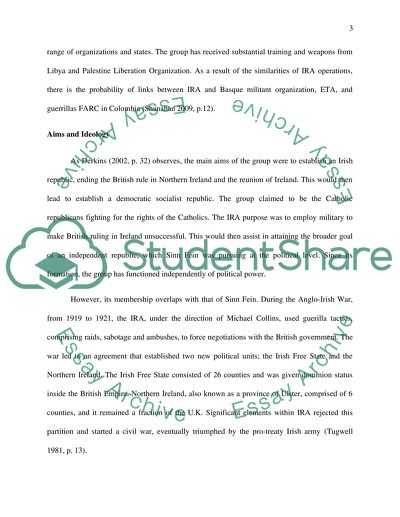Cite this document
(“A Profile of the Irish Republican Army Essay Example | Topics and Well Written Essays - 2250 words”, n.d.)
Retrieved from https://studentshare.org/history/1399443-a-profile-of-the-irish-republican-army
Retrieved from https://studentshare.org/history/1399443-a-profile-of-the-irish-republican-army
(A Profile of the Irish Republican Army Essay Example | Topics and Well Written Essays - 2250 Words)
https://studentshare.org/history/1399443-a-profile-of-the-irish-republican-army.
https://studentshare.org/history/1399443-a-profile-of-the-irish-republican-army.
“A Profile of the Irish Republican Army Essay Example | Topics and Well Written Essays - 2250 Words”, n.d. https://studentshare.org/history/1399443-a-profile-of-the-irish-republican-army.


